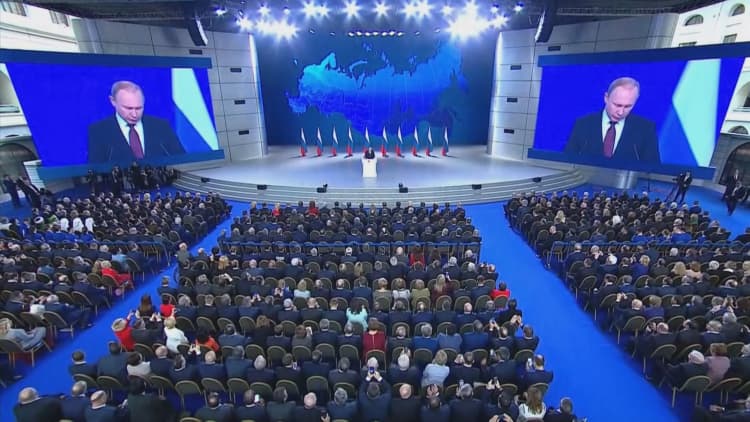VIENNA — Despite a slew of unsuccessful tests, Russia's nuclear-powered missile with so-called unlimited range will be ready for war within the next six years, a slightly accelerated timeline than previously reported, according to a U.S. intelligence assessment.
The revelation of the new, more ambitious timeline for the missile comes even though the Kremlin has yet to secure a successful test over multiple attempts, according to sources with knowledge of a U.S. intelligence report.
It also comes on the heels of a mysterious explosion off Russia's northern coast that killed five scientists and sparked fears Moscow had tested the missile in question, called Burevestnik. A U.S. intelligence assessment found that the Aug. 8 explosion occurred during a recovery mission to salvage a lost Burevestnik from the ocean floor.
Last March, Russian President Vladimir Putin unveiled several hypersonic weapons, as well as Burevestnik. Putin said it was nuclear powered and had unlimited range.
Burevestnik, also known as Skyfall, has been tested once earlier this year and prior to that, the weapon was tested four times between November 2017 and February 2018, each resulting in a crash.
The U.S. determined that the longest test flight lasted just more than two minutes, with the missile flying 22 miles before losing control and crashing. The shortest test lasted four seconds and flew for five miles. The tests apparently showed that the nuclear-powered heart of the cruise missile failed to initiate and, therefore, the weapon was unable to achieve the indefinite flight Putin bragged about.
Putin had claimed that the "invincible" weapon had a proven capability. However, CNBC reported in March that the Kremlin will only produce a few of these weapons because the program has yet to complete a successful test and is too expensive to develop.

Despite all the setbacks, though, Putin is determined to invest in weapons of this magnitude, according to national security experts.
"Russia is committed to a massive investment in new systems like this to defeat U.S. missile defenses. We are stumbling toward an arms race," Jeffrey Lewis, a nuclear weapons expert at the Middlebury Institute of International Studies at Monterey.
"Trump's personal friendship with Putin is no substitute for the treaties that restrained the nuclear superpowers. Whatever the two leaders say, the U.S. and Russian militaries are spending billions on new nuclear weapons targeted at each other," Lewis told CNBC.
Joshua Pollack, a nuclear proliferation expert and editor of the Nonproliferation Review, called Putin's strategy "overkill" and said that it usually takes a long time to develop "exotic new technologies," such as this missile system.
"Nearly everything he showed off was designed to overcome or circumvent U.S. missile defenses in one way or another. Their current generation of ICBMs can do the job without difficulty," Pollack said. "But perhaps he's anticipating the next generation of defensive technology and trying to stay ahead of it."


